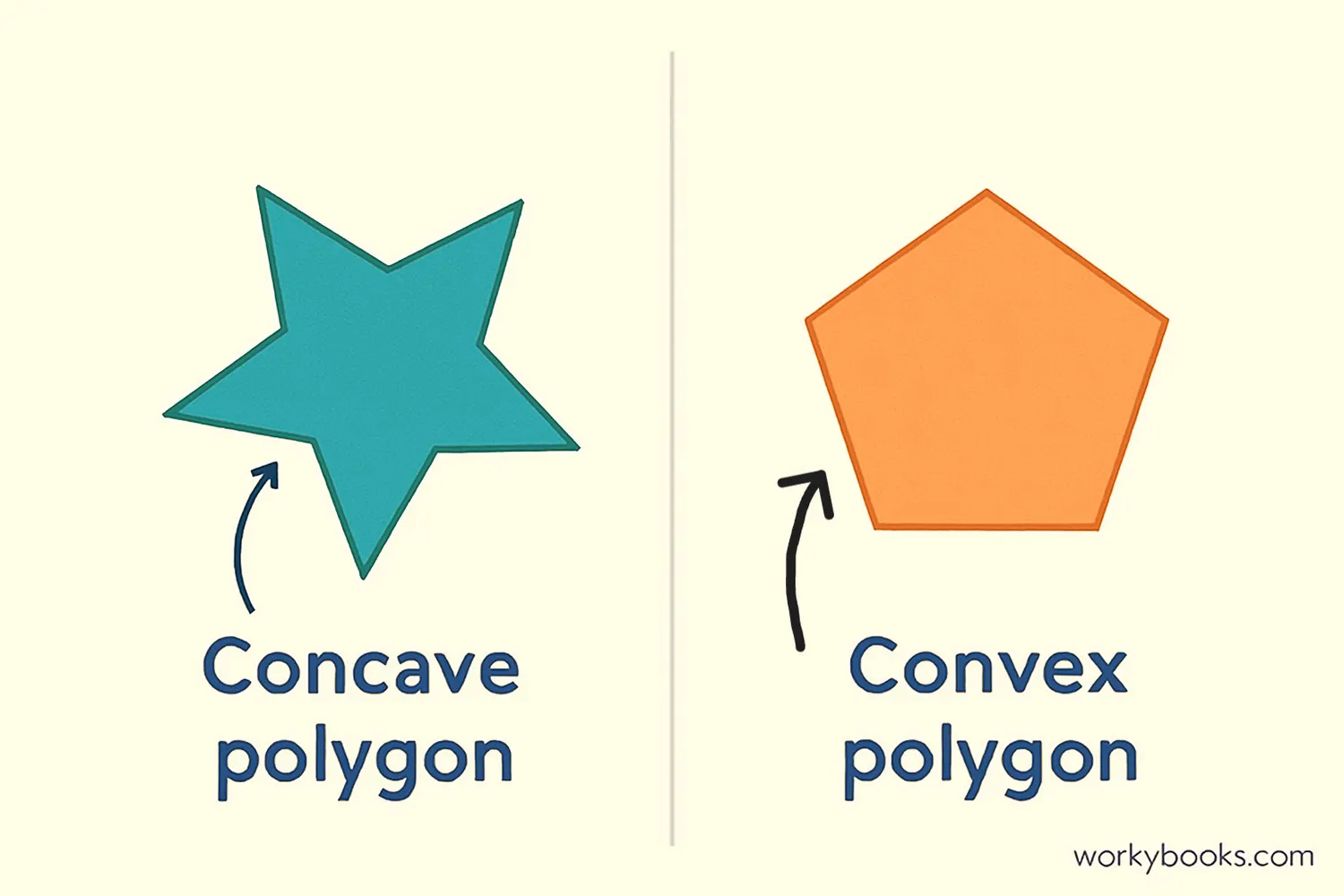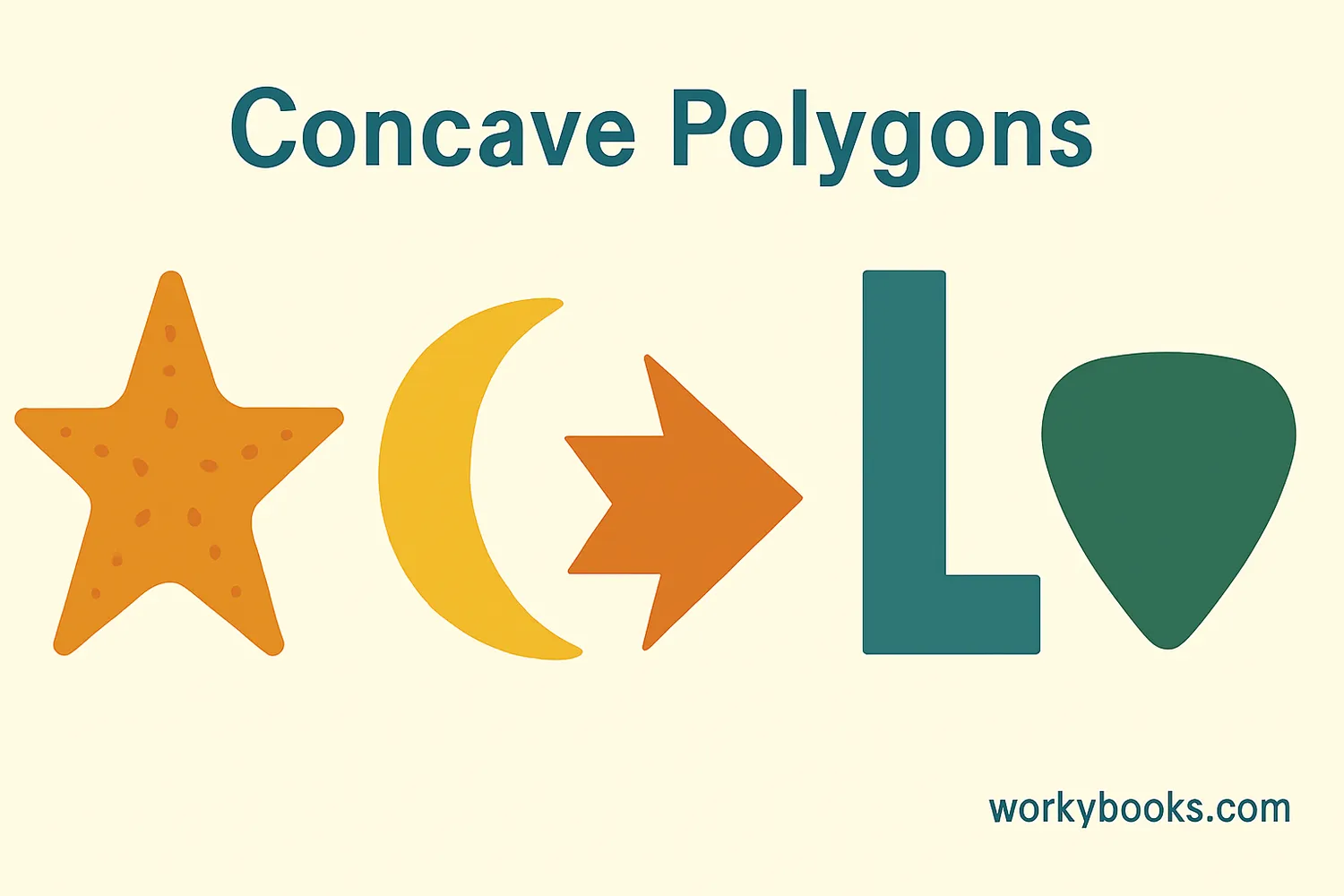Concave Polygons - Definition, Examples, Quiz, FAQ, Trivia
Learn about special shapes with "caved-in" sides through simple explanations and fun activities
What is a Concave Polygon?

A concave polygon is a special shape with at least one interior angle greater than 180 degrees. This means it has at least one "caved-in" side, like a dent in the shape.
Think of it like a star shape - where the points go inward instead of outward. These are also called non-convex polygons or reentrant polygons.
The opposite of a concave polygon is a convex polygon, where all interior angles are less than 180 degrees and all sides point outward.
Key Concept
A concave polygon has at least one reflex interior angle (greater than 180°) which creates the "caved-in" appearance.
Facts & Properties
Concave polygons have special properties that make them different from other shapes:
Reflex Angles
At least one interior angle is greater than 180°
Diagonals Outside
At least one diagonal lies outside the polygon
Can Be Divided
Can be divided into convex polygons
Remember
If you can draw a straight line that passes through a polygon at more than two points, it's concave!
Examples & Identification

Let's look at some examples of concave polygons:
Star shape: All the points that go inward make it concave. Each of these inward points creates a reflex angle greater than 180°.
Crescent moon: The curved "bite" taken out of the circle creates a concave shape.
Arrowhead: The notch where the arrow attaches to the shaft creates a concave angle.
Letter "L": The corner where the two lines meet forms a reflex angle.
How to identify:
- Look for any "dents" or "caves" in the shape
- Check if any interior angles are greater than 180° (reflex angles)
- Try to draw a straight line through the shape - if it passes through more than two sides, it's concave
Real-World Connection
Concave polygons are used in architecture, design, and even in nature! Starfish and some leaves have concave shapes.
Practice Quiz
Test your knowledge about concave polygons with this 5-question quiz. Choose the correct answer for each question.
Frequently Asked Questions
Here are answers to common questions about concave polygons:
Geometry Trivia
Discover interesting facts about polygons and geometry:
Ancient Polygons
The word "polygon" comes from Greek words "poly" meaning "many" and "gonia" meaning "angle". Ancient Greek mathematicians studied polygons over 2,500 years ago!
Nature's Polygons
Honeybees use concave hexagons in their honeycombs. The bottom of each cell is a concave pyramid made of three rhombi, creating a strong structure with minimal material.
Architectural Shapes
Concave polygons are used in modern architecture for their visual appeal and structural properties. The Walt Disney Concert Hall in Los Angeles features concave stainless steel panels.
Infinite Shapes
There's no limit to the number of sides a concave polygon can have. You can create concave polygons with 5 sides, 50 sides, or even 500 sides!





